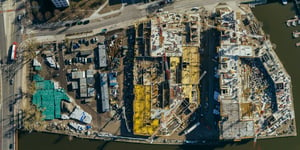
Sustainability in concrete construction: Vemaventuri's response to urgent need for action
At a time of growing concern about environmental degradation, the construction industry is under increased scrutiny for its significant environmental footprint. Globally, it consumes around a third of all materials and contributes enormously to waste production. It is also responsible for around 26 percent of global greenhouse gas emissions. As cities and populations continue to grow, it is clear that there is an urgent need to introduce sustainable practices in the construction industry. Experts estimate that, on average, a building the size of New York City will need to be built every 40 days for the next 40 years to meet the demand for housing. These figures highlight the urgent need to decarbonize the construction industry as part of the overall transition to a more sustainable world.
In response to this urgent call to action, Vemaventuri presents innovative solutions that make an important contribution to sustainability by optimizing, rather than replacing, the use of concrete. Through the targeted use of concrete sensor technology, the quality, durability and sustainability of buildings can already be positively influenced during the construction process.
One outstanding example is the SONO product, which measures the water content in concrete and therefore enables a quick quality check of the concrete before it is placed. Deviations from the target value can be detected in good time and corrective measures can be taken. Undetected defects in the concrete mix design can lead to premature corrosion of the reinforcing steel and thus to cracks and spalling of the concrete.
The PHONO product with its ultrasonic sensors also helps to optimize the concrete result by determining the concrete fill level and detecting voids. The data obtained enables the construction workers to take appropriate compaction measures and thus improve the concrete result without having to carry out costly reworking later on.
TEMO, a product for measuring temperature and determining the degree of maturity, also contributes to sustainability by detecting undesirable temperature trends during the curing process in good time and enabling corrective measures to be taken.
The integration of sensor technology thus enables improved strength and durability of concrete components. The service life of buildings can thus be extended, which represents an important step towards a more sustainable construction industry. Through these pioneering solutions, we at Vemaventuri want to make a significant contribution to a more sustainable and resilient future for generations to come.
Resources:
2024, McKinsey Report: Building circular: Maximizing CO2 abatement and business opportunities

